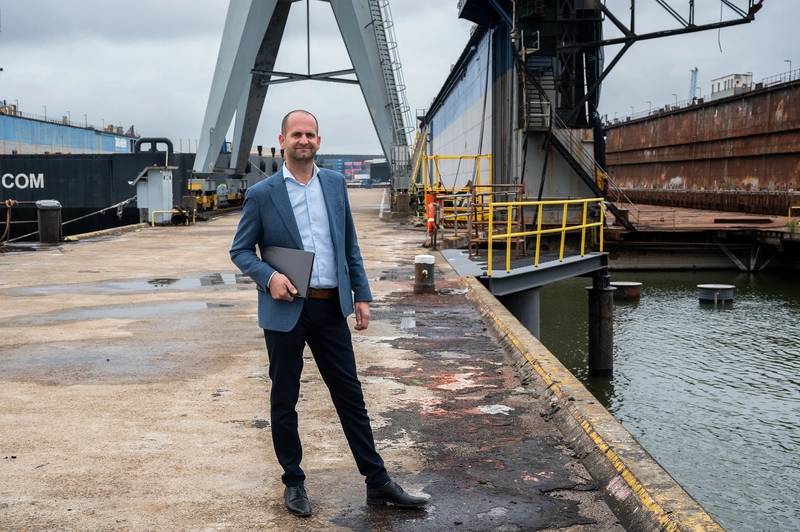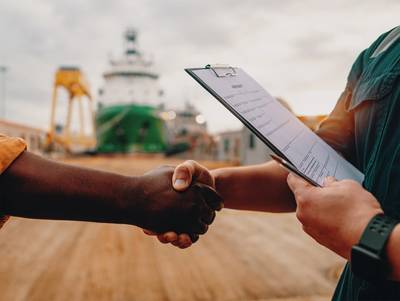Maritime Subcontracting: 'Do it Right' for Successful Projects
Within the maritime sector not enough attention is paid to maritime subcontracting. And yet, it is as important as the main contracts that maritime main contractors conclude with their clients, such as shipping companies and buyers of superyachts. The same applies to the oil & gas and renewable energy industry.
Thomas van Tol, co-founder of The Synergy Partner, writes: "As many maritime main contractors do not conclude contracts with their subcontractors in the right way, they take major risks for themselves as well as for their clients. Most of the time they are not aware of it. Nevertheless, generally 70% of all work and materials is purchased or subcontracted."
In this article, Van Tol shows how maritime main contractors can draw up their maritime subcontracting with subcontractors in a professional way. He also shows which risks there are at present and how you can prevent them.
- Main contract
When a ship, yacht or superyacht is ordered from a shipyard, naturally a sales or main contract is drawn up. This also applies to large-scale renewable energy projects. It states the project requirements including the agreed price and delivery time. A contractual planning should also be included, including a critical path leading to the agreed delivery date. Van Tol: ‘The maritime main contractors then start working on the assignment and pass it internally on to the assigned project team. They prepare requisitions for the purchasing department. And from then on things often go wrong.’
- Main contract and Purchase Orders: terms often do not match
‘This department usually purchases products and services on the basis of a Purchase Order (PO). But beware: the conditions associated with those Purchase Orders often do not necessarily match the conditions that are stated in the main contract. That is a potential risk. Let me give you an example. Imagine you as a main contractor (for example a shipyard) buy an engine from a supplier. The agreed terms and conditions state that the engine has a two-year warranty from the moment of delivery to the main contractor. The Purchase Order does not include a penalty for delay.
Now let's have a look at your main contract with the client. It also includes a two-year warranty, from the moment of delivery to the client. And the main contract states a penalty for delay of 5% of the main contract price per week of delay. This means that you, as main contractor (in this case a shipyard), have to take over the warranty of the engine that your supplier has delivered a long time ago. And if your supplier delivers the engine too late, you will be fined. That's weird, isn't it? It is so easy to prevent that from happening.’ Let's see how you can deploy maritime subcontracting successfully.
 The Author: Thomas van Tol, co-founder of The Synergy Partner.
The Author: Thomas van Tol, co-founder of The Synergy Partner.
- Deploying Maritime Subcontracting successfully
Firstly, it is important to make a risk analysis based on the main contract. So, what are the contractual risks and how do I mitigate them in my subcontracts. Van Tol: ‘In the example above, we see two risks: warranties that have expired and delayed delivery. Therefore, always conclude a contract with your subcontractors, which in this case states that the warranty also applies, two years from the delivery of the ship. Include a penalty for delay, or part of it, from the main contract in the contract with your supplier. And this is just the beginning.’
- Top 3 of Points for Improvement in maritime subcontracts
Fortunately, Van Tol sees more and more maritime main contractors that start to pay closer attention to the subcontracts they enter into with their suppliers. A good first step. Still, he often sees several points for improvement. Three are listed below:
1. Drawing up a Subcontract Plan
‘It is often thought that making formal agreements with suppliers may have a negative impact on the relationship. But hold on. If you deliver a project too late, most clients will really not sympathise too much with you as a main contractor. They will bind you to your contract. That is why it is important that main contractors think about how they draw up their subcontract plan.
I recommend you to analyze your main contract on risks and to translate this into a subcontract plan. The subcontract plan should address the criticality and complexity of the work which is subject to the subcontract. Other considerations are the availability of alternative suppliers and whether or not the supplier is strategically important for the maritime main contractor. A standard PO will of course do for the supply nuts and bolts, but a proper subcontract is essential for complex risky outsourcing.’
2. Planning and reporting obligations
‘A contractual planning and detailed progress reporting obligations are often missing in maritime contracts, let alone in maritime subcontracts. If we look again at the example above, you see that this may be a costly omission. A contractual planning like this mentions the deadline and milestones of your maritime subcontract. The detailed reporting obligation provisions, specify the reporting requirements and the reporting frequency. It also mentions how delays will be dealt with. In the example above, for instance, you agree that the supplier reports the progress of the construction of the engine once a week. This will avoid unpleasant surprises and also enables you to take mitigation measures in the event of an imminent delay, and to inform your client.’
3. Align warranties provisions with the main contract
It is not by chance that Van Tol mentions warranties in the example above: ‘Because they often do not align with the warranties provisions that are included in the POs to subcontractors. Imagine that the engine breaks down after the warranty period of your supplier, but still within your warranty period! That may result in millions of euros in damage. And imagine the ship you delivered is on the other side of the world with a broken engine. Then you might be liable for all costs. And, talking about the other side of the world, include that condition as well in the contract with your supplier. So, in the event of a faulty engine on the other side of the world, your supplier must also carry out the repair there.’
Van Tol concludes: ‘Of course, this list can be expanded even further. For example, think about the correct implementation and follow-up of maritime subcontracting. With this working method and the awareness of the risks, risks for main contractors can be mitigated. This way you, as a main contractor, can deliver a project in a professional way in an environment that allows all involved parties to work according to clear agreements. The successful implementation of maritime subcontracting results in more successful maritime projects. That is my belief.’











